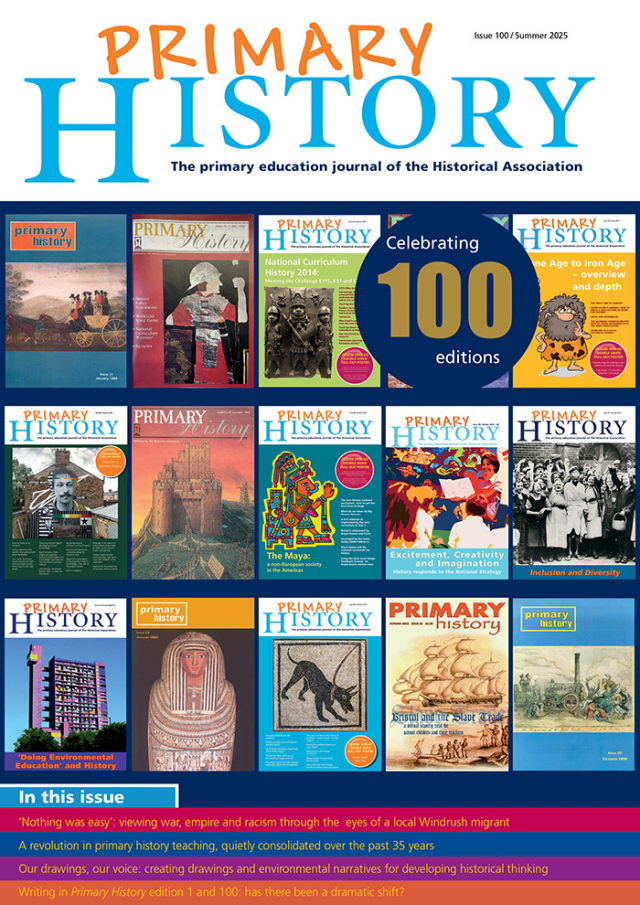Primary History 100: Out now
The primary education journal of the Historical Association

Editorial
We are proud to present you with the hundredth edition of Primary History journal. It is a publication that has developed and changed over the intervening years, adjusting and amending as the curriculum and teaching approaches have varied. At its heart, however, has always been the desire to provide support and guidance for primary teachers. It has continually sought to engage and inspire teachers as they explore the exciting world
of history with their children. Since its inception, Primary History has combined expert pedagogical knowledge with ideas for challenging teaching activities. Teachers, academics and historians have all generously shared their ideas and expertise. This has been supported by the office of the Historical Association, which has facilitated and enhanced the production of the publication. We would like to thank all the volunteer authors over the years who have provided such thought-provoking and stimulating articles, which shared expertise and provided practical activity ideas to enhance our classrooms. We would also like to thank those at the Historical Association who turn our articles into such an attractive read, especially the Publications Manager, Martin Hoare, and our long-suffering proofreader.
In this hundredth edition, you will find thoughts from previous editors as they reflect on the role of and changes to history teaching and the Primary History journal. Susie Townsend and Karin Doull look at aspects of the decade in which Primary History was born. One element of the poster provides a timeline of the early years of the 1990s. Glenn Carter highlights the anniversary of the first passenger train and his article links to the other side of the poster. Andrew Wrenn provides a case study linked to exploring the experiences of black RAF servicemen.
We have a fascinating article about investigating the local area using maps, photos and personal memory. This comes from Maria Vlachaki, working with children in Thessaloniki, Greece. It may be difficult, however, to replicate the sunshine if you seek to copy her ideas for your area! The focus on children’s voice is continued in the article where two of our associate class teacher editors investigate children’s views on history. Ailsa Fidler and her colleagues introduce us to an archive of children’s voices from the past. Tim Lomas and Paul Bracey provide insights into the findings of the latest Primary History survey.

